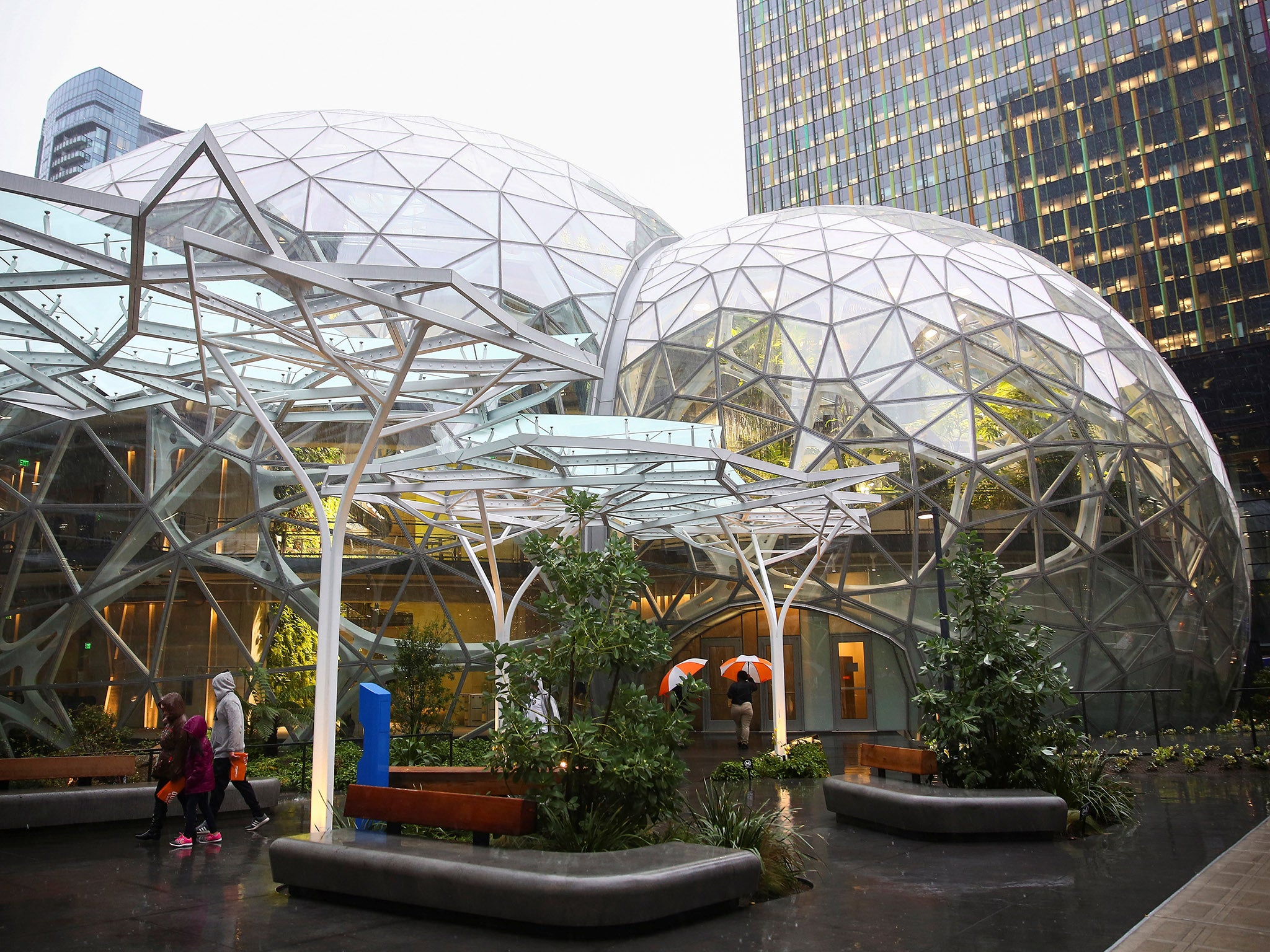Why your office is beginning to look like a forest
The trend, called ‘biophilia’, is based on the idea that humans have an innate connection to nature

Because the wilderness is our natural habitat, biophilia advocates say, we feel more at ease there than in a sterile office. Research has found that offices outfitted to look more like the natural world lead to happier, healthier and more productive employees. “When you look at a tree, you’re smarter,” explains Daniel Skiffington, a senior associate at NBBJ.
Another way to look at it: if we have to be stuck inside all day without a minute to go out to get some fresh air, why not make our time in the sterile office as pleasant as possible?
Many people prefer daylight and plants to darkness and formica. “Every day I wish for a small meteorite to crash through our building’s roof at night so we can get some sunlight in,” says Martin Bate, an analyst at BNSF Railway Co. Bate works in a converted factory with limited natural light. “We’re certainly not vampires, so why don’t we have windows?”
Creating a nature-infused workplace isn’t as simple as buying a few thousand ferns. (Amazon hired a full-time horticulturist for its hyper-green space.) In its new office, North Carolina-based insurance brokerage Jackson Sumner and Associates installed View Dynamic Glass, a “smart” window that reduces glare and heat from the sunlight. No matter how bright or hot the sun shines, the company can keep the windows unobscured to let in natural light all day long.
The Acros Fukuoka building in Japan embraces forestry (Alamy)
Jackson Sumner also boasts a 26-foot-tall waterfall that puts ions into the air and uses lights with softer hues than a standard fluorescent bulb. Its pH-balanced water is filtered through copper pipes and stripped of any potentially harmful chemicals. “Do you know where fluoride comes from? It’s a byproduct of the making of fertiliser,” says Wayne Sumner, the president and founder of Jackson Sumner. “We think that there are other ways to get fluoride.” (The US Department of Health and Human Services recommends 0.7 milligram of fluoride per litre of drinking water to prevent tooth decay.)
Healthy buildings have been on the rise for at least a few years. In 2014, two former Goldman Sachs partners launched the Well Building Standard, a set of guidelines for designing buildings to make people happier, healthier and more productive. (Think Leadership in Energy and Environmental Design certification, but swap environmentalism for health and wellness.) Buildings that have clean air, an emphasis on walkability and healthy food – and meet a series of other criteria in seven categories – can achieve Well certification. The International Well Building Institute lists 545 office buildings around the world that qualify.
Many offices haven’t gone full Well but have borrowed elements of the healthy building lifestyle. View Dynamic Glass windows have been installed at more than 400 companies, including BlackRock, FedEx and Delta Air Lines. Plant walls aren’t an uncommon sight in offices these days. Some companies have even adjusted the air circulation in their workspaces to offset “volatile organic compounds” in the air. Others have expressed interest in having an on-site aviary, says NBBJ’s Mullenix.
Like many office design trends, much of this is done in the name of productivity. Myriad studies point to the benefits of natural spaces. Plants make us more productive, one international study found. Another found that cortisol levels are higher in spaces with limited natural light. Elementary school students scored 20 percentage points higher on tests when they sat in naturally lit classrooms. And studies have linked stale office air to lower productivity.
Not all offices have to look like a jungle to have the intended effects. Aaptiv, a New York City-based technology company, has about 20 plants scattered across its one-floor open office. “It makes it feel more laid back and a little more peaceful,” says Jake Ludwig, a production coordinator in the audio department at Aaptiv. “It’s New York, it’s kind of grey. It’s nice to have a lot more green around.”
© Washington Post
Join our commenting forum
Join thought-provoking conversations, follow other Independent readers and see their replies
Comments